Nature is full of surprises, and occasionally, we come across moments that leave us in awe. In a recent video that has captured the hearts of many, a polar bear seems to be seeking assistance, showcasing the vulnerability of these majestic creatures.
A Plea for Assistance
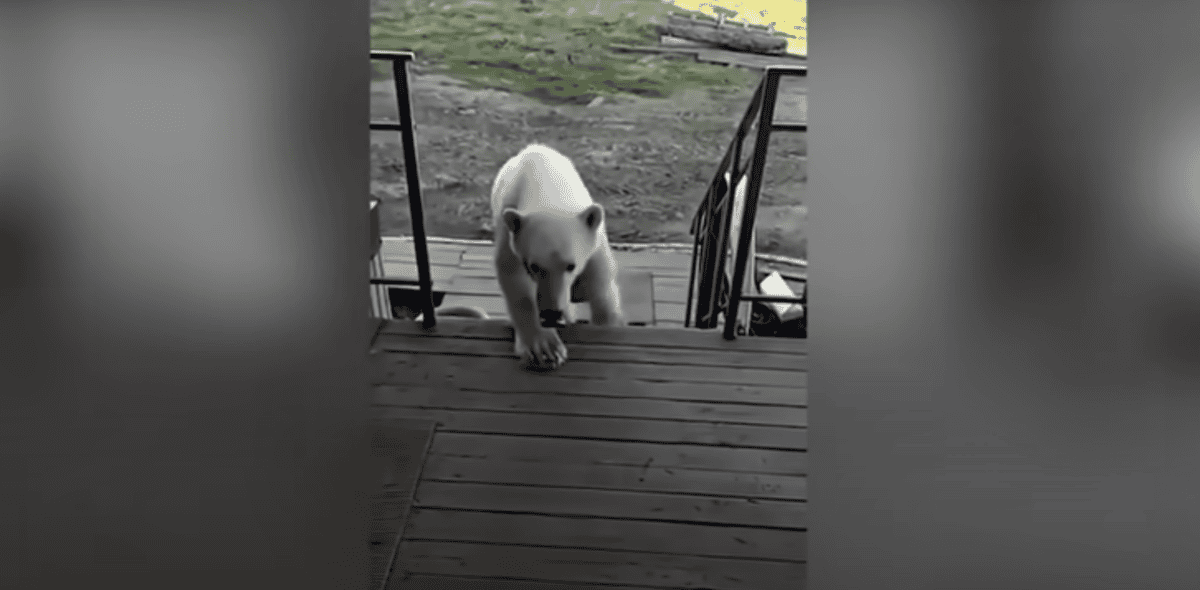
The video begins with the polar bear approaching cautiously. The bear’s behavior suggests a mix of curiosity and desperation as if trying to communicate or seek help. While initially startled, the onlookers try to understand the bear’s intentions, speaking to it in soothing tones.
A Delicate Situation

As the video progresses, it becomes evident that the bear might be distressed. The repeated mentions of “челюсть” (jaw in Russian) suggest that the bear might have something stuck in its jaw or is experiencing some discomfort. The onlookers seem concerned, trying to figure out how to assist the bear without putting themselves in danger.
Human and Animal Interaction

The interaction between humans and polar bears is touching and tense. While the bear appears to be seeking help, its sheer size and strength make the situation precarious. The onlookers, understanding the potential risks, maintain a safe distance while trying to decipher the bear’s needs.
Where Do Polar Bears Live?

Polar bears are primarily found in the Arctic regions, including areas around the North Pole, Canada, Alaska, Russia, Greenland, and Norway. They are well-adapted to life on the sea ice, where they hunt for their primary food source.
What Do Polar Bears Eat?

Polar bears mainly hunt seals, particularly ringed and bearded seals. They rely on the high-fat content of seal blubber to maintain their energy levels and insulation against the cold.
How Big Can Polar Bears Get?

Polar bears are the largest land carnivores. Adult males typically weigh between 900 to 1,600 pounds and can reach lengths of up to 10 feet from nose to tail. Females are smaller, usually weighing between 500 to 700 pounds.
How Do Polar Bears Hunt?
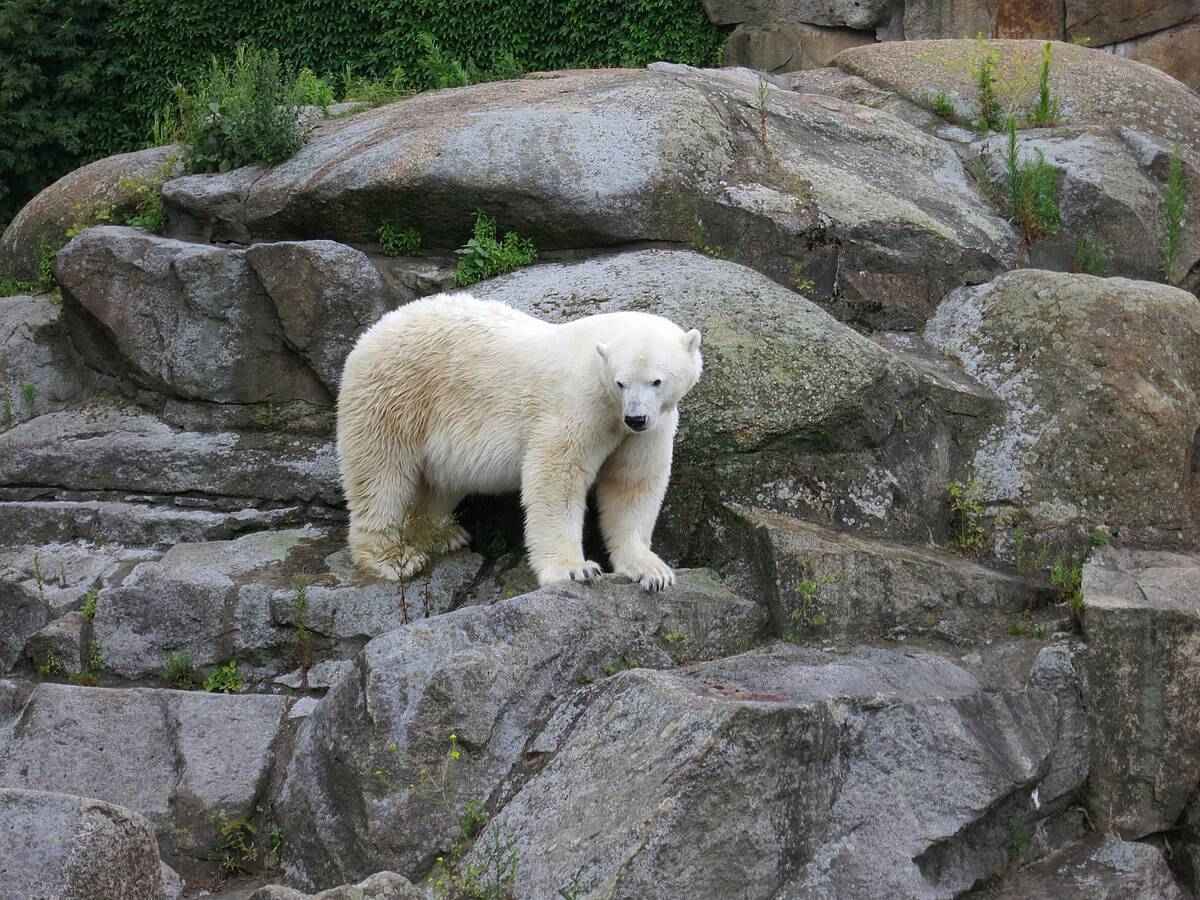
Polar bears are patient hunters, often waiting by seal breathing holes in the ice to catch their prey. They use their powerful sense of smell to locate seals and their strong limbs to break through the ice.
Are Polar Bears Endangered?

Polar bears are classified as vulnerable due to the loss of their sea ice habitat from climate change. Melting ice reduces their ability to hunt seals, leading to decreased body condition and lower reproductive rates.
How Do Polar Bears Communicate?

Polar bears communicate through vocalizations, body language, and scent markings. They may growl, roar, or chuff, and use facial expressions and postures to convey different messages.
What is the Lifespan of a Polar Bear?

In the wild, polar bears typically live between 15 to 18 years, although some individuals can live into their early 30s. In captivity, with consistent food and medical care, they can live even longer.
How Do Polar Bears Reproduce?

Polar bears mate in the spring, and females give birth to one to three cubs after a gestation period of about eight months. Cubs are born in dens made of snow and stay with their mother for up to two and a half years.
What are the Distinctive Features of Polar Bears?

Image by Alexey_Seafarer on depositphotos.
Polar bears have a thick layer of blubber and dense fur to keep them warm in the Arctic cold. Their fur appears white but is actually transparent, providing camouflage in the snow. They also have large paws adapted for swimming and walking on ice.
How Do Polar Bears Swim?

Polar bears are strong swimmers, capable of swimming long distances between ice floes and land. They use their front paws to paddle and their back legs to steer, and can swim at speeds of up to 6 miles per hour.
Are Polar Bears Affected by Climate Change?

Yes, climate change significantly impacts polar bears by reducing the sea ice they depend on for hunting seals. As the ice melts earlier in the spring and forms later in the fall, polar bears have less time to hunt and build up fat reserves.
What Should You Do If You Encounter a Polar Bear?
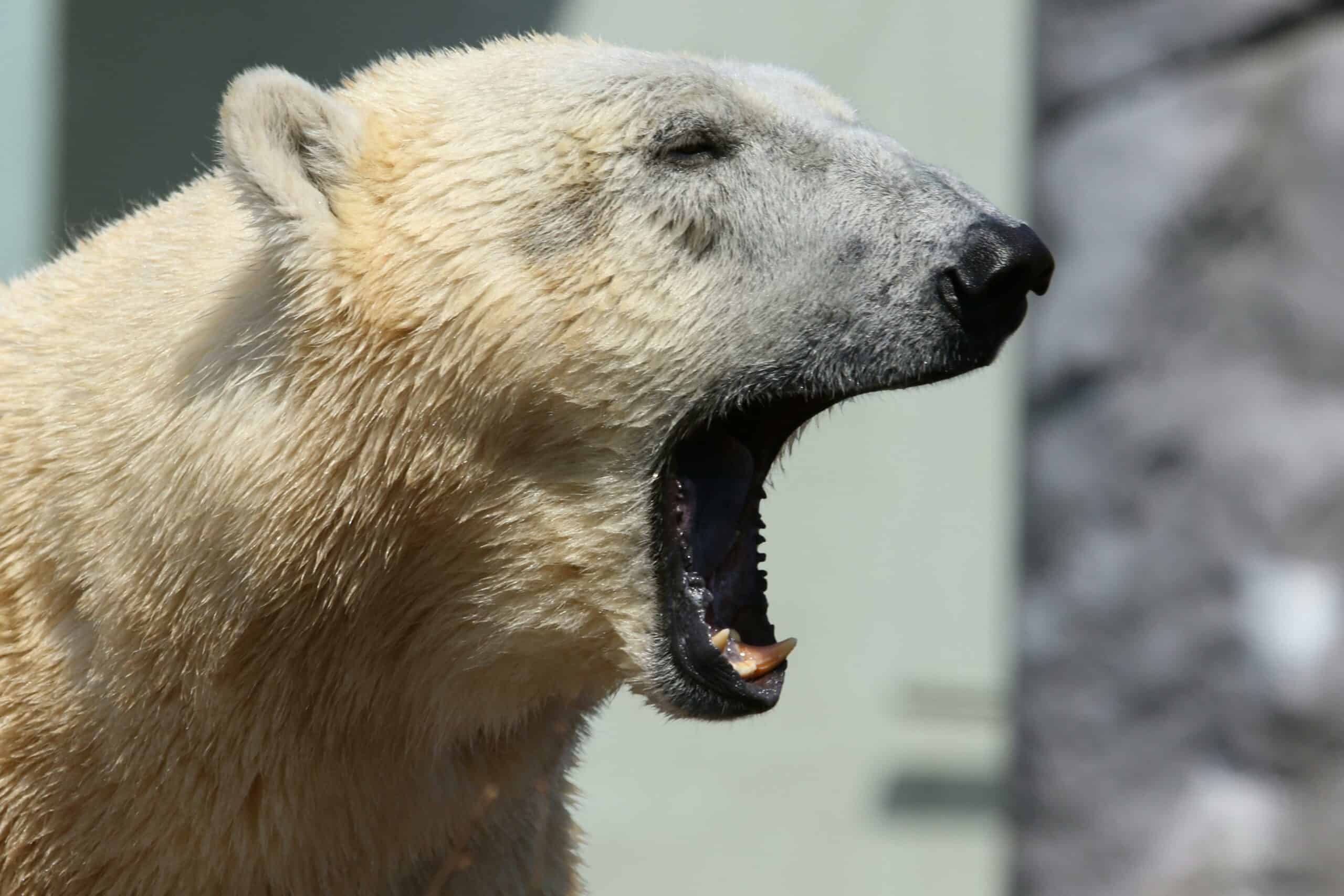
If you encounter a polar bear, it’s important to remain calm and avoid sudden movements. Do not run. Back away slowly while keeping an eye on the bear, and try to reach a safe location such as a vehicle or building.
How Are Polar Bears Adapted to Cold Environments?

Polar bears are perfectly adapted to the Arctic climate with a thick layer of blubber, dense fur, and black skin that absorbs heat from the sun. Their large paws act as snowshoes, distributing their weight as they walk on thin ice.
What is the Status of Polar Bear Populations?
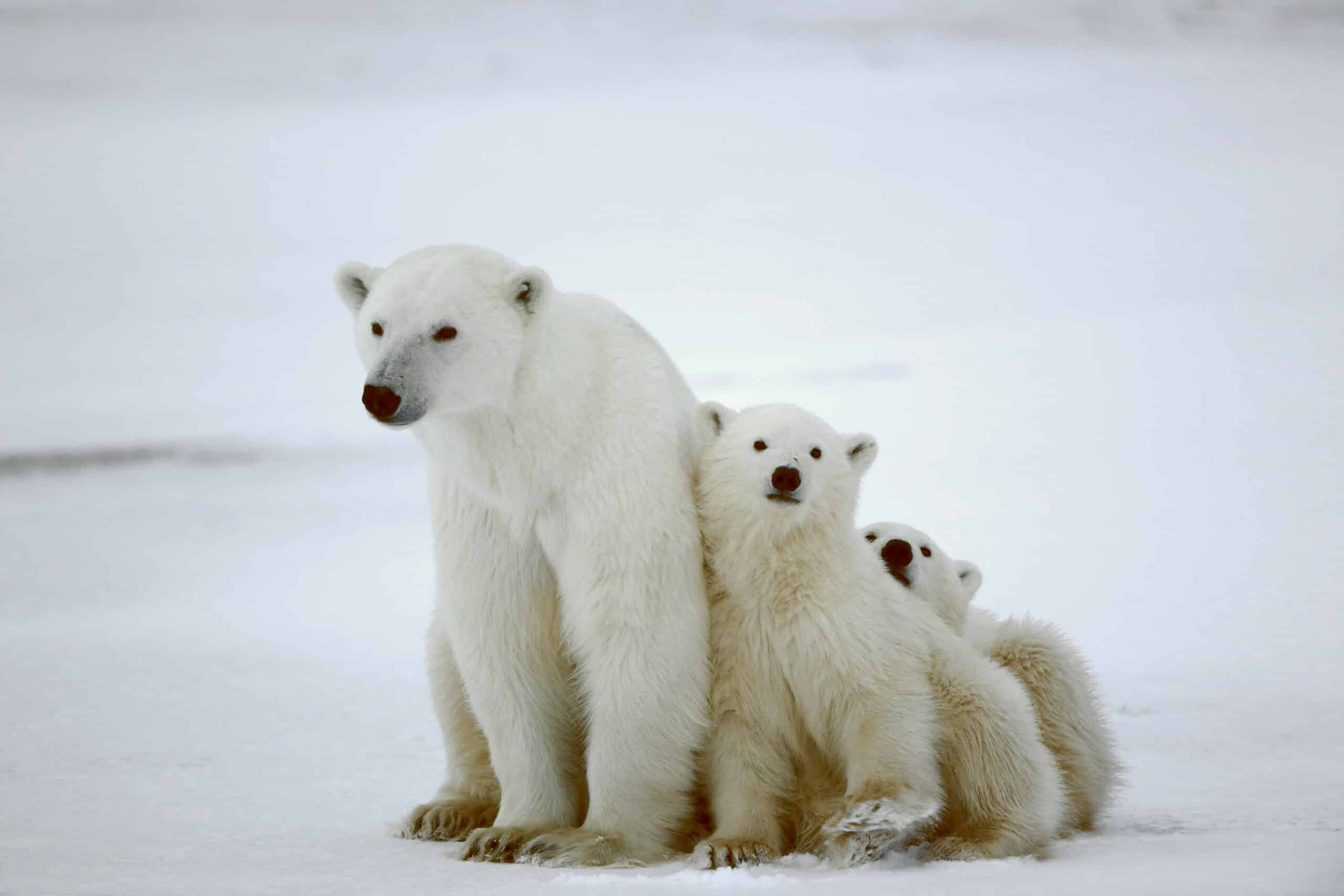
Polar bear populations are declining in some areas due to the loss of sea ice and the impacts of climate change. Conservation efforts are focused on protecting their habitat and reducing human-wildlife conflicts.
How Can Conservation Efforts Help Polar Bears?
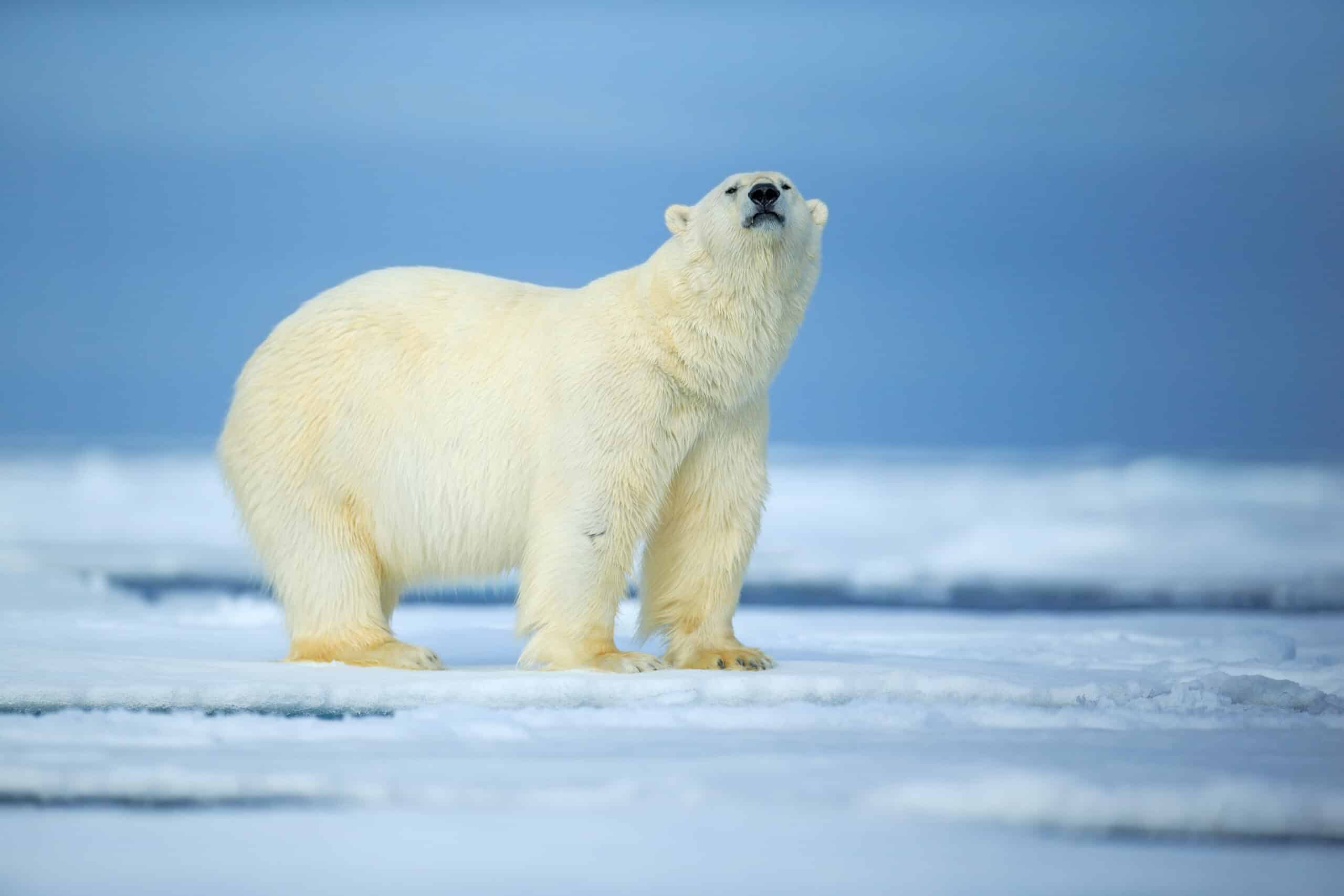
Conservation efforts for polar bears include protecting their sea ice habitat, reducing greenhouse gas emissions, and conducting research to understand their behavior and health. International cooperation is also crucial for effective conservation strategies.
The Beauty of Compassion

The video serves as a testament to humans’ compassion towards animals, even those as formidable as polar bears. It’s a reminder that every creature, no matter how powerful, can have moments of vulnerability and that kindness can bridge the gap between species.
Next up:
- Polar Bear Cubs Taking Their First Steps
- Polar Bear Found Swimming in Hudson Bay, Canada
- Polar bear family feeding on a huge dead whale
Join our Forum for free today!

- 400-Pound Therapy Llamas named Beni and Prince Ease Travelers’ Stress at Portland International Airport - July 22, 2024
- Woman Captured Howling with Gigantic White Wolf in Beautiful Footage - July 22, 2024
- Florida Police Urge Public to Stop Taking Selfies with ‘Depressed’ Black Bear off Highway 98 in Santa Rosa Beach - July 22, 2024

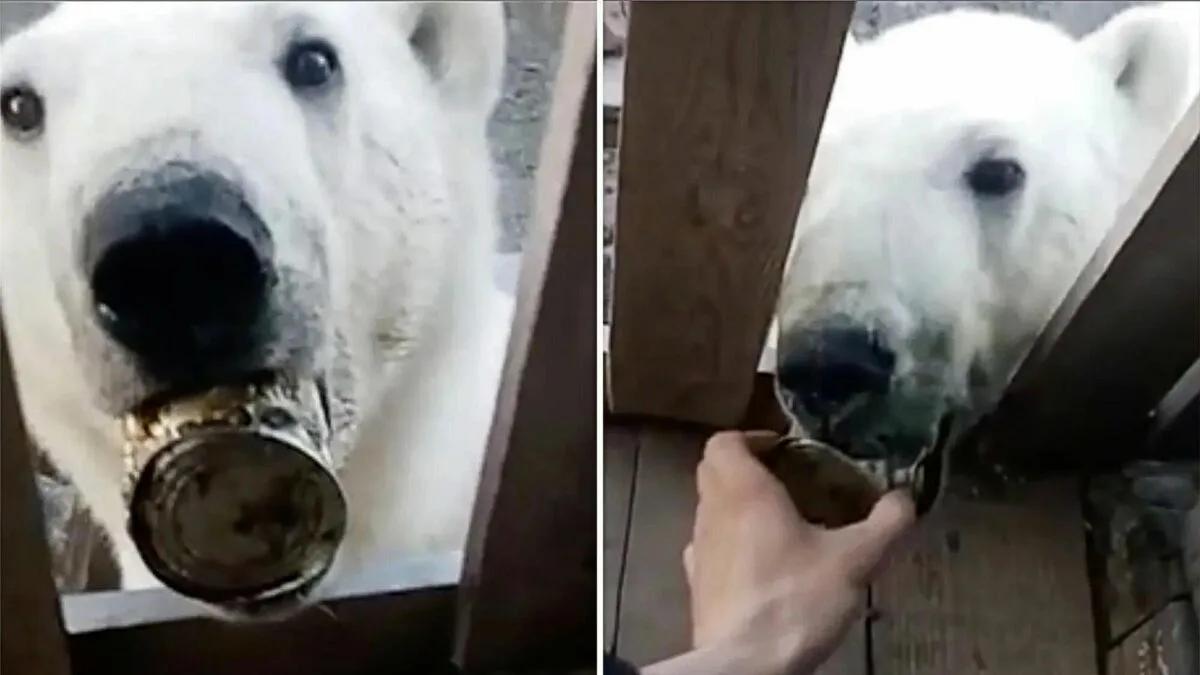

No name
Sunday 10th of September 2023
This is so OLD. This story is from ages ago.
Brian
Saturday 9th of September 2023
It was in a zoo. The zoo let it get that way...in captivity. Fuck russia and the zoo.
Sunday 10th of September 2023
@Brian, Nope, the video was sourced from the zoo, my guess is that the folks who did the care were from there. If you actually find the original video and audio,the rescuers flew 2000 miles out of Moscow to get to the bear... so no not in captivity.
Donald Bowerman
Friday 8th of September 2023
Big, bad bear or not, the mere fact it's a man-made aluminum can used to hold, presumably, food that was, presumably, then discarded by man that attracted the bear to it and created the whole problem is reason enough that man owed the bear what it could do to relieve the poor creature from its sad dilemma. It appears to have taken a herculean effort by man and machine to accomplish the task, but the end justifies the means. The polar bear is happy, I'm thrilled, and all of us should rejoice for this brief, but beautiful encounter between Earth's top two apex predators.
It doesn't matter
Friday 8th of September 2023
The sad part is, they were asking for a remedy, to a human induced problem. Maybe they are smarter and more in touch than we give them credit for.
Donald Bowerman
Friday 8th of September 2023
I would agree. Such encounters seem to happen with an ever increasing degree of regularity. It's nothing short of beautiful to see such interactions between man and beast end with everyone smiling.
Sylvia
Friday 8th of September 2023
I totally agree with Mick 100 percent. 👍❤️👍
jenb
Friday 8th of September 2023
@Deborah de Santamaria, Hahaha this is a proper chucklefest, love it !!
Bonnie payne
Friday 8th of September 2023
@Sylvia,
Deborah de Santamaria
Friday 8th of September 2023
Hello Karen. Get in line. Yer second behind Mick.